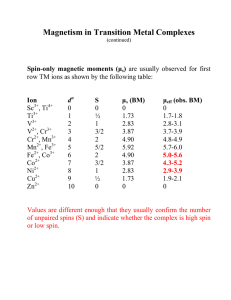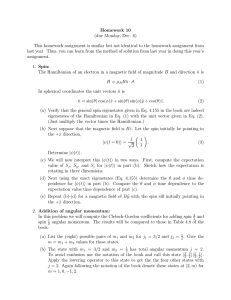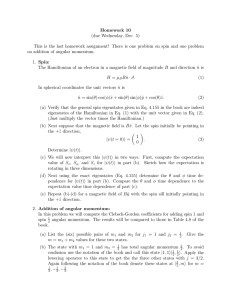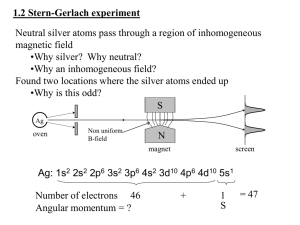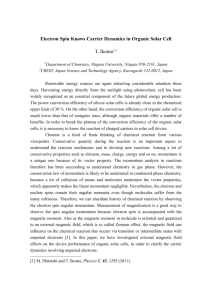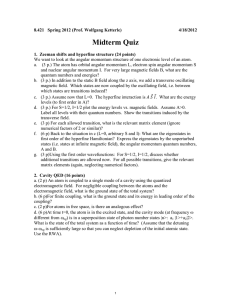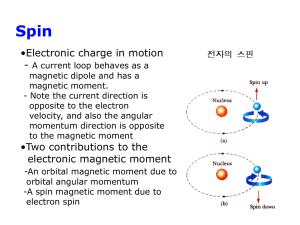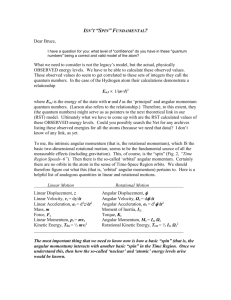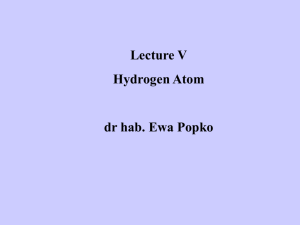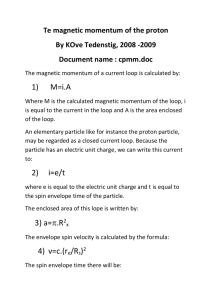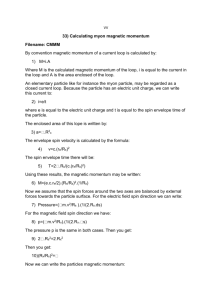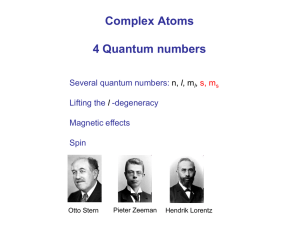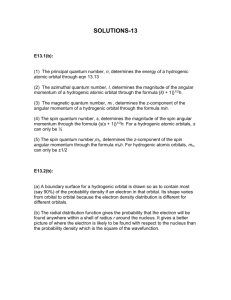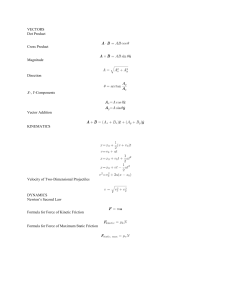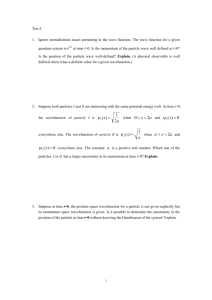Homework #6 Problem Set
advertisement
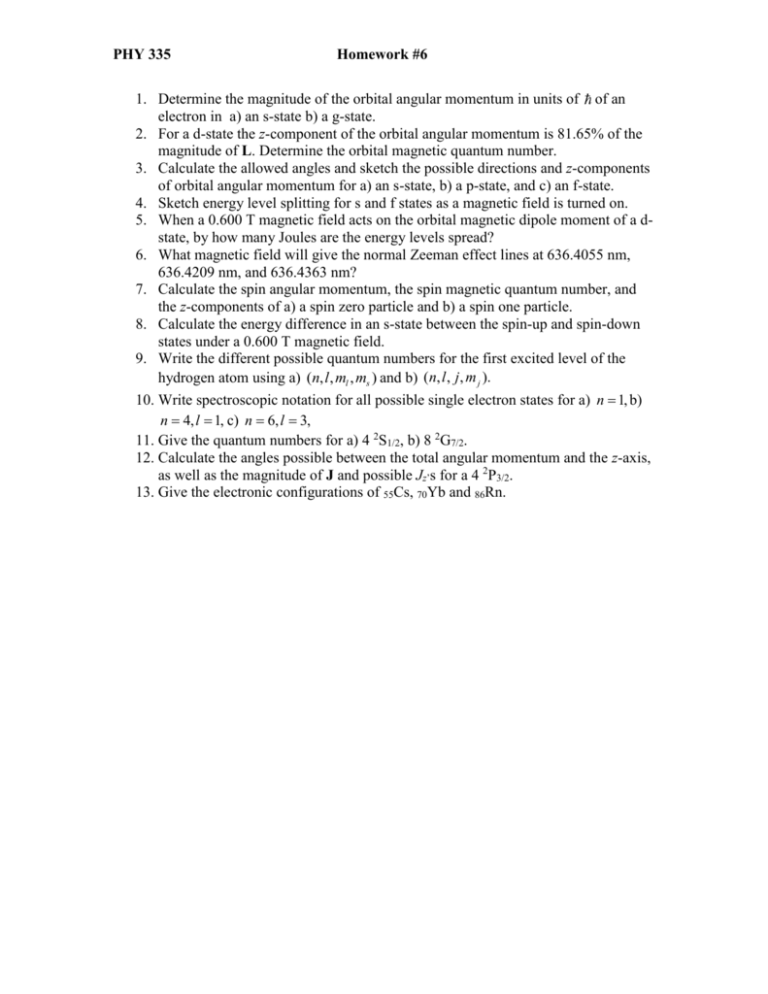
PHY 335 Homework #6 1. Determine the magnitude of the orbital angular momentum in units of of an electron in a) an s-state b) a g-state. 2. For a d-state the z-component of the orbital angular momentum is 81.65% of the magnitude of L. Determine the orbital magnetic quantum number. 3. Calculate the allowed angles and sketch the possible directions and z-components of orbital angular momentum for a) an s-state, b) a p-state, and c) an f-state. 4. Sketch energy level splitting for s and f states as a magnetic field is turned on. 5. When a 0.600 T magnetic field acts on the orbital magnetic dipole moment of a dstate, by how many Joules are the energy levels spread? 6. What magnetic field will give the normal Zeeman effect lines at 636.4055 nm, 636.4209 nm, and 636.4363 nm? 7. Calculate the spin angular momentum, the spin magnetic quantum number, and the z-components of a) a spin zero particle and b) a spin one particle. 8. Calculate the energy difference in an s-state between the spin-up and spin-down states under a 0.600 T magnetic field. 9. Write the different possible quantum numbers for the first excited level of the hydrogen atom using a) (n, l , ml , ms ) and b) (n, l , j , m j ). 10. Write spectroscopic notation for all possible single electron states for a) n 1, b) n 4, l 1, c) n 6, l 3, 11. Give the quantum numbers for a) 4 2S1/2, b) 8 2G7/2. 12. Calculate the angles possible between the total angular momentum and the z-axis, as well as the magnitude of J and possible Jz’s for a 4 2P3/2. 13. Give the electronic configurations of 55Cs, 70Yb and 86Rn.
